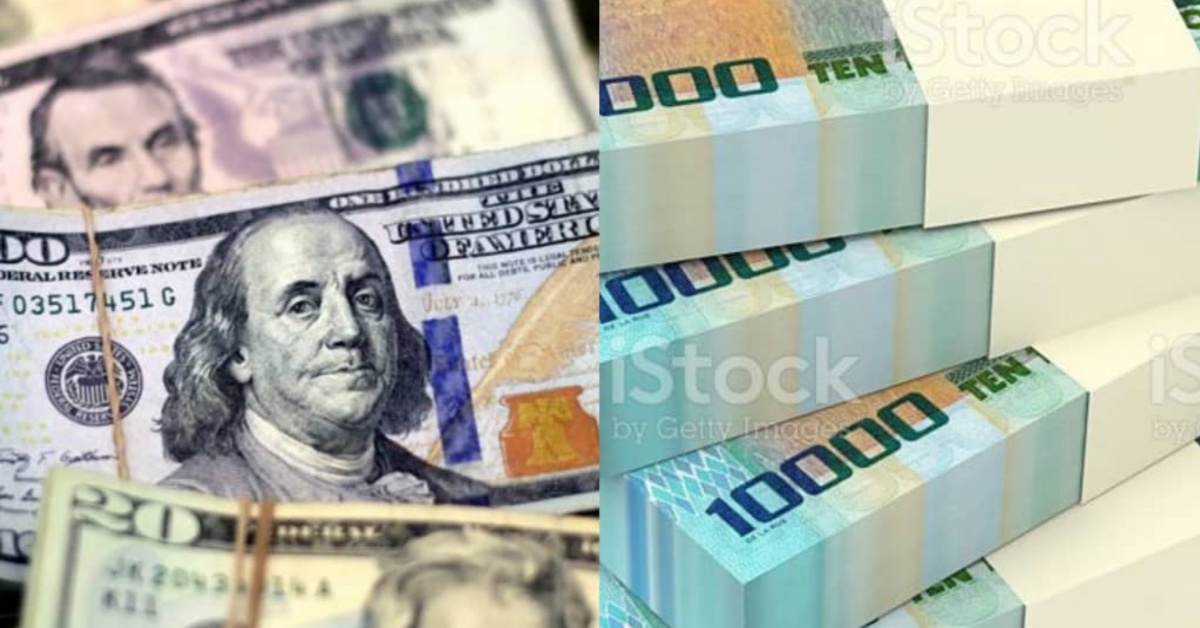According to Steve Hanke’s currency watch list, this week the Leone currency has depreciated against the USD by 44.27% since January 1, 2022. Steve is a renowned professor of applied economics at Johns Hopkins and a senior fellow at the Independent Institute.
Sierra Leone Leones (SLL) continued its depreciation in the third quarter of 2022, according to the Bank of Sierra Leone, the currency exchange rate of the national currency against the US dollar was 14,746 SLL in September 2022.
Compared to the same time last year, the recent figure represents a value depreciation of 40.7% from 10,477 SLL in September 2021. The Average price of fuels such as Gasoline, Diesel, and Kerosene continued to increase in the third quarter of 2022, reaching 19,333 SSL rising by 20.83 percentage points compared to the previous quarter’s 16,000 SLL. The direct effect of exchange rate depreciation is to increase the price of imports relative to exports, which will tend to decrease the value of net exports (exports fewer imports) and widen the current account deficit.
The rate of increase in the general price level and the exchange rate regime operation are also closely related, for instance, when a crawling peg exchange rate is adopted in the economy, the implications are that it may lose a nominal anchor which could lead to inflation.
Accordingly, the rate of inflation could become uncontrollable. This is because the exchange rate and money supply are indices of the price level. Exchange rate changes the rate of increase in the price level affected each other to produce an inflation-devaluation spiral or a vicious circle in flexible exchange regimes or pass-through effects from the exchange rate changes and the foreign price level. These effects may worsen the domestic inflation rate. The September Annual Consumer Inflation Rate in Sierra Leone was announced at 29.10% (YoY), slightly higher than the quarterly inflation rate of 28.9% for Q3, 2022 continuing the upwards trends from the previous two quarters of this year.
According to the UNS WFP RAM Sierra Leone Market Prices Bulletin | Quarter 3, 2022, the current forecasts for the GDP growth rate of the Sierra Leonean economy are predicting a growth rate of 3.8% for 2022, breakdown of sectoral trends analysis outlines the slower expansion of agriculture and services sectors below overall GDP growth rate with 2.8% and 3.7% respectively. The Price of palm oil, a commodity often used in the preparation of Sierra Leonean households’ meals increased by 13.52% followed by locally produced rice and cassava with price increases of 9.31% and 9.06% respectively from their price levels in August 2022.
According to Keren and Pack, the strength of the pass-through effects depends on the price elasticities. The loss of a nominal anchor could imply that shocks to the rate of inflation will have lasting effects, pushing the rate of inflation to a higher level and depreciating the exchange rate.
In this case, exchange rate movements, money supply growth, and changes in the rate of inflation drive each other. The Sierra Leone experience shows that the exchange rate and the domestic price level have been unstable for many years. Accelerating money supply growth, fiscal deficit, and foreign exchange squeeze compounded the problem of inflation and exchange rate depreciation.
Governments of developing countries including Sierra Leone have made efforts to achieve a steady exchange rate and slow growth in the money supply and general price level. Still, from research, it has been proven that there have been continuous fluctuations in these macroeconomic variables in the past four decades. It is also crystal clear that Gross Domestic Product (GDP) has been falling, while the unemployment rate increasing. Also, the inflation rate has been increasing, and the exchange rate and balance of payments, fluctuations have been worsening.
The balance of payment crisis resulted among other things, a growing parallel market for foreign currency, which has been very difficult to control. Whilst the consequences on the economy have been severe, few studies have been conducted to explain the fluctuation of the exchange rate and money supply on the general price level in Sierra Leone. Few have linked the exchange rate policy and monetary policy. Most studies have concentrated on explaining the domestic rate of inflation, where the nominal exchange rate enters as one of the explanatory variables.
Others have estimated a money demand equation where the nominal exchange rate enters as one of the explanatory variables only two of these studies attempt to establish a statistical relationship between money and the exchange rate. For example, money supply growth, inflation, and exchange rate are analyzed in a vector autoregressive model.
The authors find that money supply growth drives nominal exchange rate changes with no feedback effects. In assessing the effect of exchange rate fluctuations and the growth in money supply on the general price level, an answer would be needed for the question below; Is there a link between nominal money supply and the nominal exchange rate? In the long run, De Grauwe argues that the correlation between money supply and the nominal exchange rate is relatively strong but tends to be lost in the short run. We would expect this relationship to be stronger in periods of nominal exchange rate flexibility.
The Impact of the exchange rate on inflation can impact domestic prices through direct and indirect channels, via their effect on aggregate supply and demand. The direct channel is due to the operation of the law of one price based on purchasing power parity theory. It is postulated that the exchange rate between two currencies is determined by relative movements in the price levels in the two countries. PPP states that price levels between two countries are equal when expressed in the same currency at any period.
Therefore, if PPP holds, exchange rate fluctuations translate into proportional movements in the domestic price level; i.e. pass-through is equal to one. In a small open economy (an international price taker), a depreciation of the domestic currency will result in higher import prices (both for finished goods and intermediate inputs), which will ultimately be transmitted to higher domestic prices.
Exchange rate variations can also affect domestic prices through their indirect effect on aggregate demand. Depreciation of the domestic exchange rate reduces the foreign price of domestic goods and services, and thereby increases foreign demand, resulting in an increase in net exports and hence aggregate demand and real output.
The increase in domestic demand and real income may bid up input prices and hence causing workers to agitate for higher wages to maintain a real wage.The nominal wage increase may result in further price increases. Furthermore, depreciation may increase the domestic price of imported goods and services and thereby lead to expenditure switching in favor of domestic goods and services, which will increase their demands and raise domestic prices
Inflation in Sierra Leone is positively related to money supply growth and real exchange rate depreciation but negatively related to real GDP growth as observed from the coefficient estimates, impulse response functions, and variance decomposition analyses.
The result also revealed the existence of inflation inertia. Real exchange rate depreciation is explained by its past values, money supply growth, and inflation. The model passes all the diagnostic tests conducted, implying the results are not only consistent, efficient, and unbiased but also non-spurious. Inflation and real exchange rate depreciation do not impact real GDP growth in Sierra Leone.
Real money supply growth has a net dynamic effect implying that cumulative increases in broad money supply will cause real inflation to in the current period. Real GDP growth exerts positive inertia in Sierra Leone such that an increase in real GDP will lead to an increase in the general price level. Generally, growth appears to be driven by its past values, probably by traditional supply-side factors, and not demand-side variables.
The tightening of fiscal and monetary policy will also help Sierra Leone to manage its debt sustainability better. Furthermore, strong reforms aimed at reducing corruption, providing free health care, and improving the decrepit transport, power, and public health infrastructures top the list of the government’s priorities. As a result, the country is ranked as one of the world’s top reformers by the 2012 World Bank’s Doing Business index.
Youth unemployment is a challenging social problem in Sierra Leone. The country’s youth unemployment rate of 60% is amongst the highest in the West African sub-region. In the context of the second Poverty Reduction Strategy Paper (PRSP II) for 2008-2012, the government has implemented new legislation for youth-friendly initiatives that aim to provide an environment conducive to youth development, employment, and empowerment.



 Post a comment
Post a comment 









